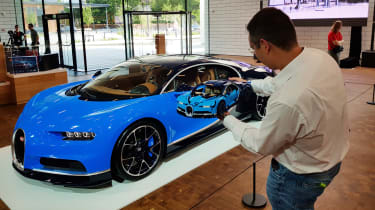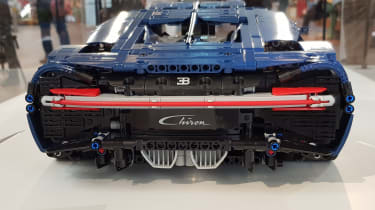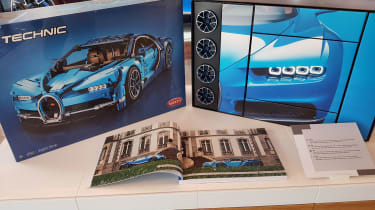LEGO Bugatti Chiron: how was the 3,599-piece model designed?
We find out how LEGO turned the Bugatti Chiron hypercar into a beautifully detailed scale model
Supercars are sometimes referred to as ‘toys’ by their owners – vehicles to be enjoyed and played with. But describing the new LEGO Technic Bugatti Chiron as a toy would be doing it a disservice.
As part of LEGO’s advanced range of products, it comes with 3,599 individual parts, 600 pages of instructions, a £330 price tag and takes around 20 hours to build. It’s a serious bit of kit featuringan almost equal amount of detail as the real car.
• LEGO James Bond Aston Martin DB5 revealed
Bugatti is the one of the latest car manufacturers to join forces with the Danish toy giant, with its new Chiron 1:8-scale Technic model. Porsche did it previously with its GT3 RS supercar, while Formula One Technic cars have also been found in stores. So how does such a project get off the ground, and what does the transition from hypercar to the Technic model look like?
To find out, we headed to the toy manufacturer’s HQ in Billund, Denmark, to speak to designers from LEGO and Bugatti. Andy Woodman, LEGO’s senior design manager, tells us during one of the first conversations he had with Bugatti it was clarified that LEGO would not be creating a replica Chiron.
“We’re not making a die-cast model. When we work with partners, that’s the first conversation we have,” he explains. “What we’re doing is creating a version, a LEGO Technic version, of the Bugatti Chiron.”
Expectations managed, the next stage is for LEGO’s staff to take a close look at the real car. “Putting the designer in front of the car is really important,” says Woodman. His team visited Bugatti’s garage to see the Chiron in the metal, and the car firm sent a highly detailed model to the LEGO studio. Woodman added the toy maker couldn’t have a real one because “our insurance doesn’t cover a Bugatti Chiron!”.
To get to the model you see here took several steps, not all of them successful. Woodman recalls the team being “really proud” of an early prototype, and how it got an eight-speed gearbox and 16-cylinder engine into the model, only to realise that “the space that the gearbox took up was where the seats needed to go!”.
The design boss says the process involved “a collaborative approach” with a “ping-pong” of ideas between the two companies, although he admits Bugatti “absolutely” reserved ultimate approval. “They really spent a lot of time looking at the model, giving us the feedback, and then we would take a meeting with them to go through the feedback,” Woodman says. “The back of the car was a real challenge. Maybe there were 10, 15, 20 different versions that Bugatti will have seen and reviewed.”
Bugatti’s head of design, Achim Anscheidt, explains: “There were some proportional issues; the rear was too narrow, so we stretched that. Everything was horizontal in the beginning, and when you start with a horizontal layout, when you look at it from a distance, everything is hanging, so you have to lift up everything.”
Anscheidt is more than pleased with the finished product, adding: “I’m happy we found a way so that even our very organic, graphical details have been reproduced to the point where you can really see that it’s a Bugatti.” He says the firms have a “perfect fit in philosophy”, adding: “I saw in Andy’s team the [same] healthy insanity that our engineers also have.”
The task of bringing the project to life fell to LEGO lead designer Aurelien Rouffiange. He calls the Chiron his “big baby” and tells us it took around 18 months to create, with six months spent working on the engine and gearbox alone. “It took me out of my comfort zone, many times,” the designer says.
Rouffiange’s favourite part of the LEGO Chiron is its rear end. He explains: “The back of the car looks astonishing. I’m proud of every part of the model, but if I have to choose one section, it would be the rear.”
Rarely do people speak so passionately about toys, but then again the LEGO Chiron isn’t really a toy, is it?
Which car would you like to see recreated in LEGO? Let us know below...
Find a car with the experts









